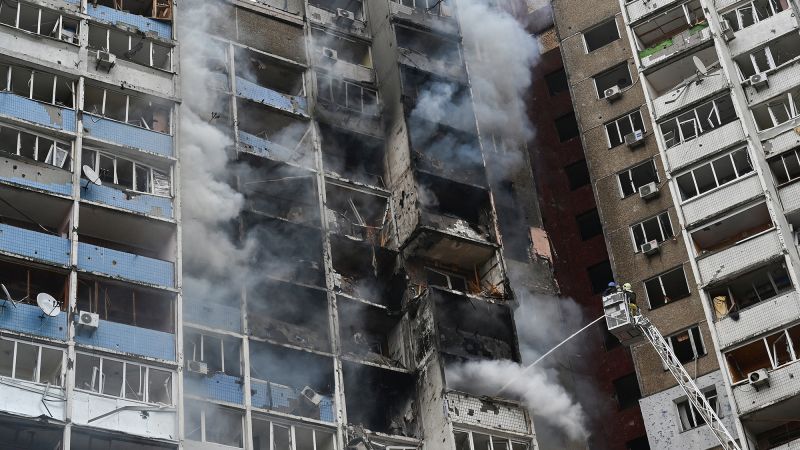
Russian missiles and drones struck multiple regions across Ukraine early Wednesday, killing at least five people and injuring dozens more. The attacks targeted Kyiv, Lviv, Kharkiv, Mykolaiv, and Dnipropetrovsk regions. According to Ukrainian officials, 44 of the 64 cruise missiles and drones fired by Russia were intercepted by air defenses.
The assault comes as Ukraine faces heightened uncertainty with Russian forces pressing attacks along the front lines, American aid being in doubt, and President Volodymyr Zelensky preparing for potential changes in his government and military leadership. Despite this turmoil, Ukrainian air defense teams were able to destroy 44 of the 64 cruise missiles, ballistic missiles, and drones fired by Russia.
Russia's intensified aerial bombardments aim to exploit dwindling supplies of critical Western air defense munitions. Ukraine has been pleading with allies for more help protecting its cities and re-stocking interceptor supplies as Russian salvos have employed the full gamut of their aerial arsenal.
Ukraine's Interior Minister, Ihor Klymenko, reported that regions across the country were targeted in this 'massive' missile attack. Hits were confirmed in Kyiv where four people lost their lives and 38 others sustained injuries. The Lviv region also experienced damage as a fire broke out due to the attacks.
Ukrainian President Volodymyr Zelensky is considering replacing General Valery Zaluzhny, the country's top military commander, but no official decision has been announced yet. Despite these considerations, General Zaluzhny remains in his position and reported that Ukrainian air defense teams successfully intercepted 44 of Russia's 64 fired missiles.
Andriy Yermak, head of the Ukrainian president's office, emphasized the need for international support: 'Ukraine needs help. Only joint efforts by democracies can stop criminal Putin.' A broad measure that would allow American arms to flow into Ukraine is expected to fail in a Senate vote on Wednesday due to growing Republican opposition and deep division on Capitol Hill.





